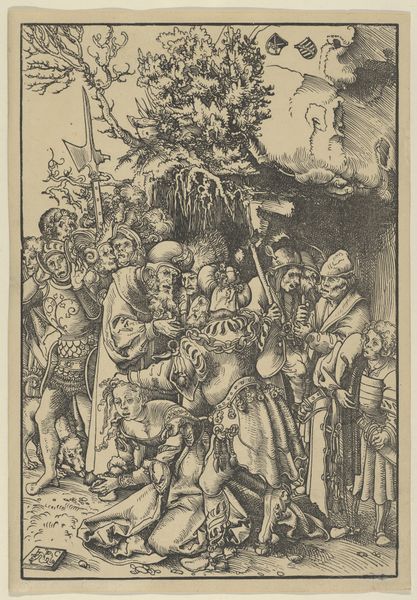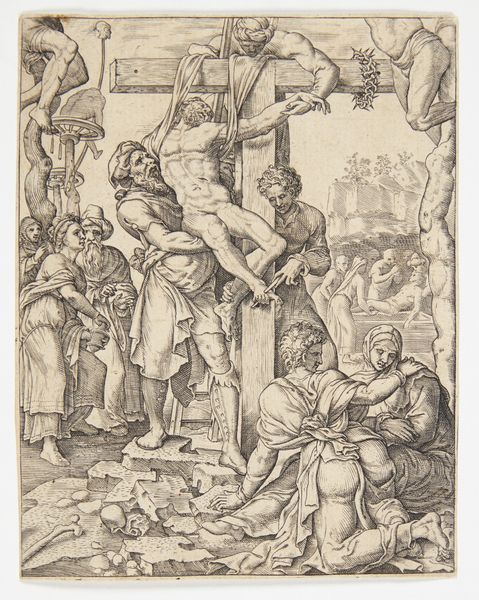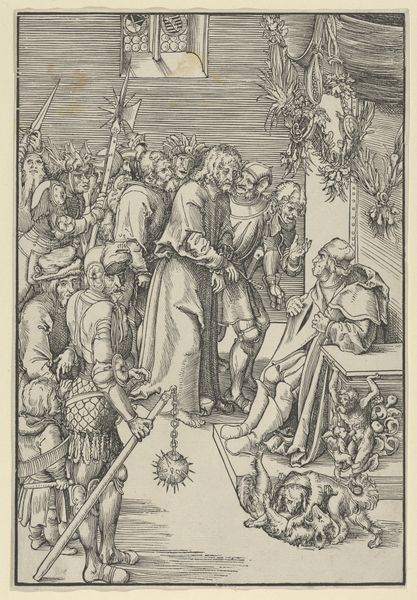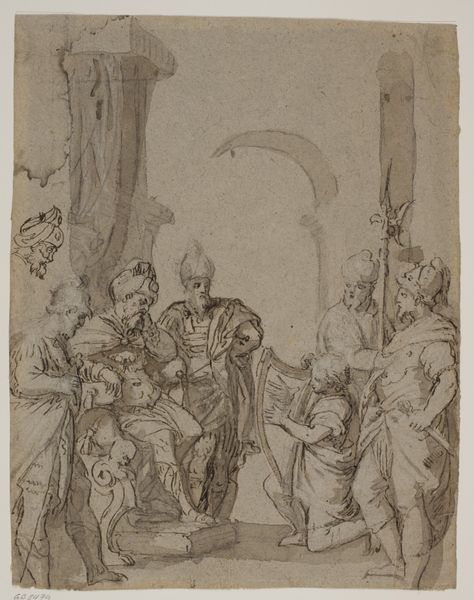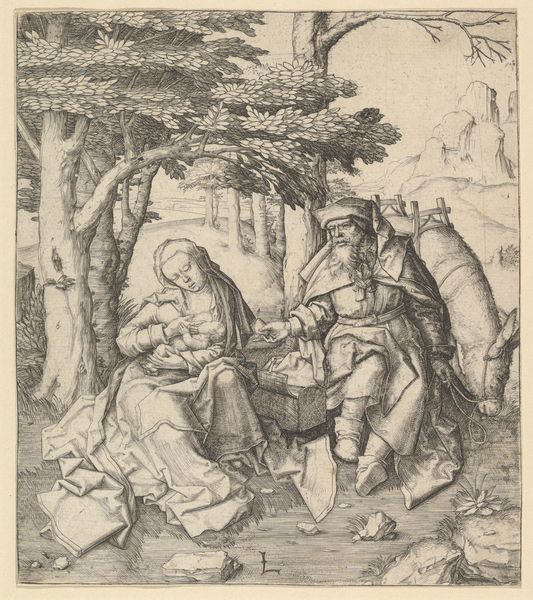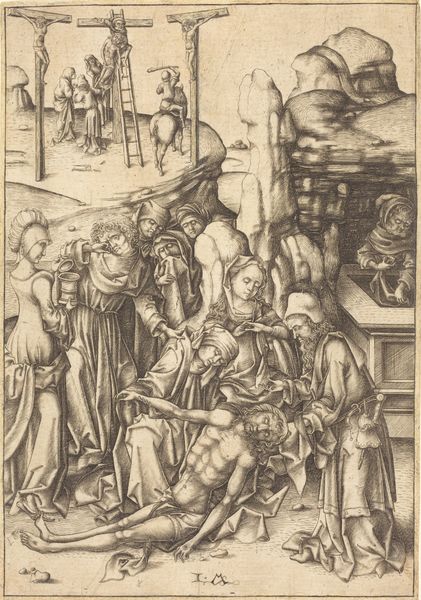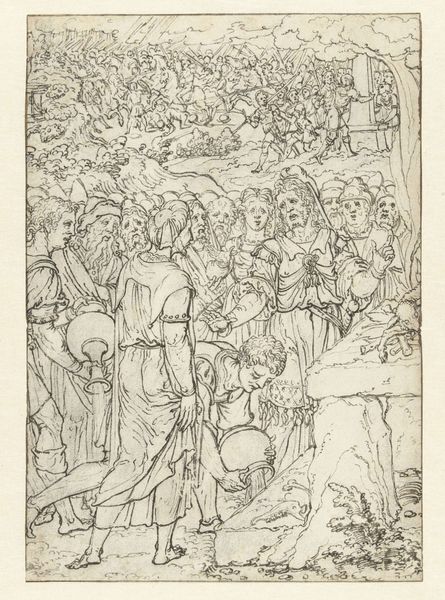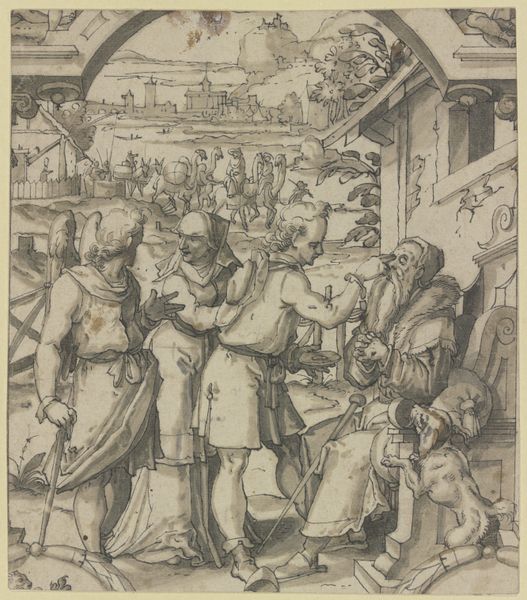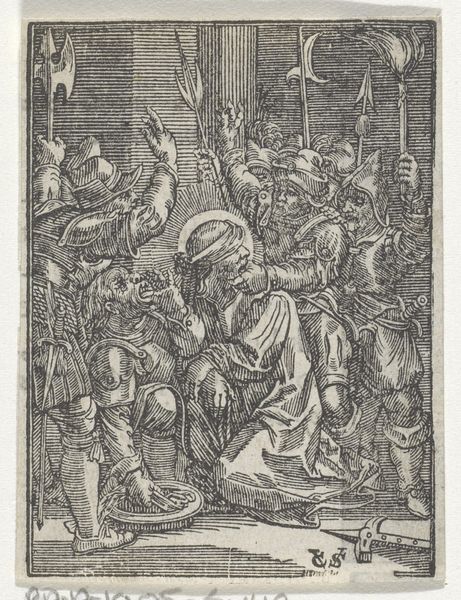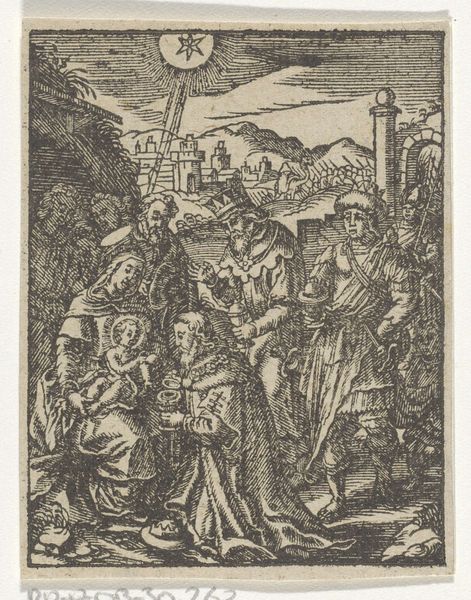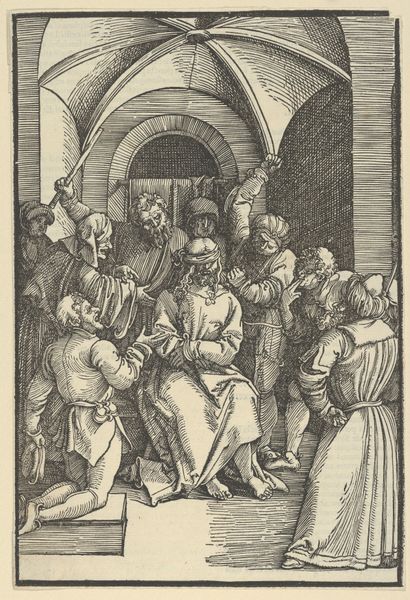
print, etching
#
narrative-art
# print
#
etching
#
figuration
#
history-painting
#
italian-renaissance
Dimensions: Sheet: 15 3/8 × 11 1/16 in. (39 × 28.1 cm)
Copyright: Public Domain
Curator: This is "The Adoration of the Magi," a print, specifically an etching, created by Andrea Andreani between 1575 and 1585. Editor: It’s interesting seeing such a classic scene rendered in a print. It feels a bit stark compared to painted versions, almost like a wood carving. What can you tell me about it? Curator: This print gives us insight into the labor and material practices of the time. Andreani wasn't just an artist; he was a craftsman deeply involved in the production process. Look at the lines—they weren’t simply sketched. Each one was etched into a metal plate. This print makes us think about the process. The Renaissance wasn't just about artistic genius. It involved workshops and laborers. Editor: So, it’s less about the divine subject matter and more about the making of it? Curator: Precisely! Think about where Andreani acquired his materials. The metal for the plate, the tools he used—these all have social and economic stories embedded within them. How does the etching medium change how we receive the "Adoration" narrative? The relative ease of reproducing it means it was more available than paintings, it speaks to a different level of art consumption. Editor: That’s a good point. Paintings were for the elite. Prints could reach a wider audience. Does that democratizing aspect influence its value as art? Curator: It pushes us to challenge traditional art boundaries. Is it “high art” or a commodity? By understanding the means of production and its availability, we reconsider its cultural worth and influence. How does widespread availability of a religious scene influence its significance? Editor: I see. Looking at art from a production angle reveals hidden stories about labor, access, and even class. Curator: Exactly. It forces us to look beyond the surface image. To truly see art, we must examine its materials, processes, and societal roles. Editor: I never considered the materials that deeply before, how much it affected consumption and its value. It’s really reframed my perception.
Comments
No comments
Be the first to comment and join the conversation on the ultimate creative platform.
